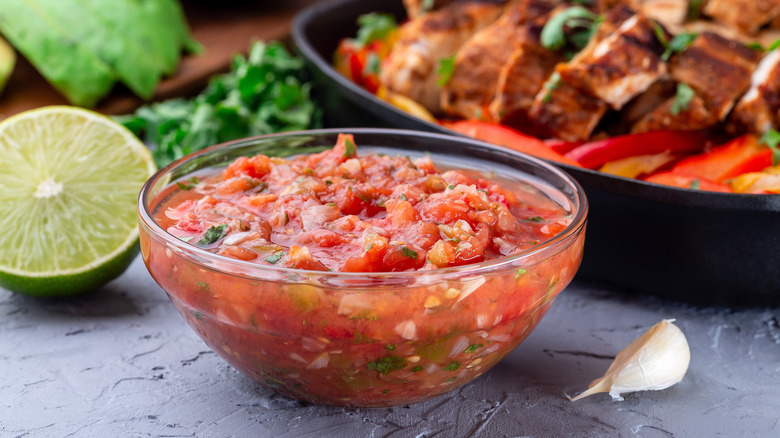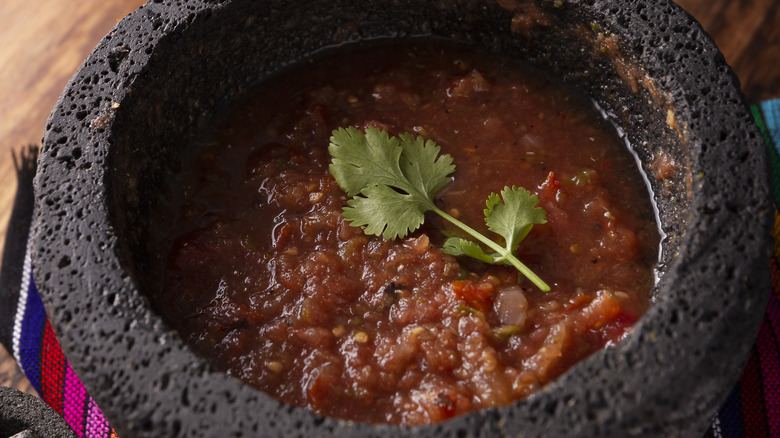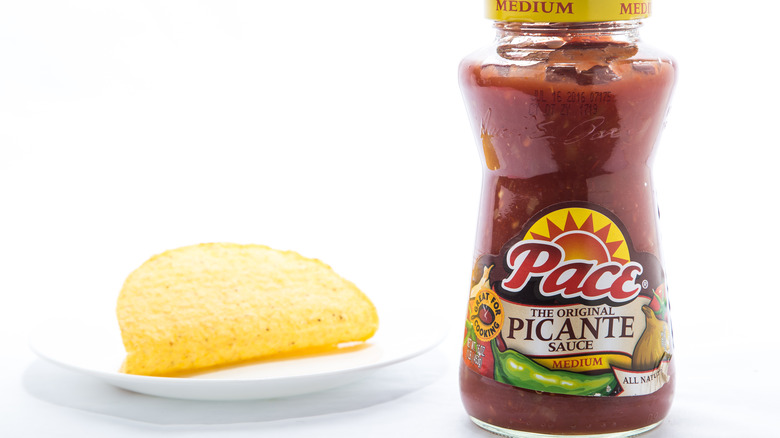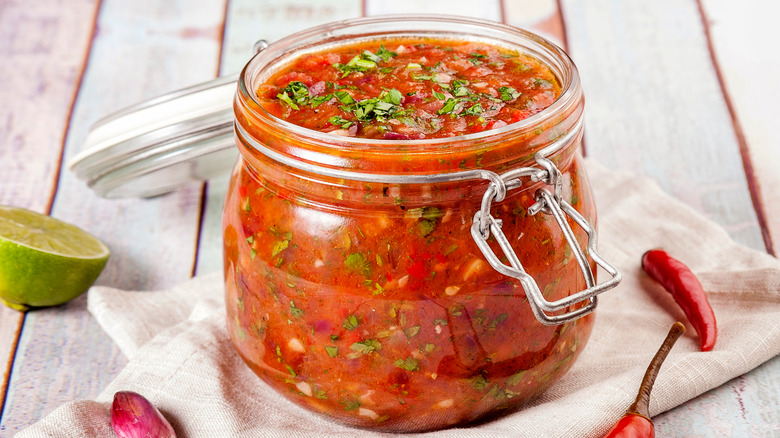Picante Sauce Vs. Salsa: What's The Difference?
Let's just say it — salsa is pretty amazing. There are several different kinds of salsa, each with varying amounts of veggies, fruit, and spice. And there is a salsa out there for everyone with such options as pineapple salsa, fire-roasted salsa, and even creamy salsa verde. The salsa or "sauce" can be used on practically anything but is especially delicious in Latin American dishes like smoked chicken tacos, bean burritos, or just plain corn tortilla chips.
In 2020, more than 218 million folks in the U.S. bought (and presumably consumed) store-bought salsa according to Statista, so the numbers are presumably even higher in countries in Central and South America, where the food originated. In the U.S., salsa is an essential party food whether you're celebrating a birthday, promotion, or just enjoying game day. But there are many cousins to the classic salsa roja that are worth considering. One of salsa's close and delicious relatives is Picante sauce. So let's dig (or rather dip) in!
What is salsa roja?
To understand Picante sauce, you have to first be familiar with salsa roja. According to The Nibble, the two things essential to salsa roja (tomatoes and chilis) are native to the Americas. The Aztecs were the first to combine the two (usually accompanied by squash seeds) to add flavor to other foods, thus inventing one of the world's favorite condiments, salsa. Since its creation, salsa roja hasn't needed much improvement, and many would argue it's the dish's simple but high-quality ingredients that make it so delectable.
Chili Pepper Madness says a basic salsa roja is made by combining fresh tomatoes, onions, garlic, cilantro, and spicy jalapenos, and blending them together on a warm stove until soft. The star of the show (or roja or "red" in salsa roja) is the sweet, acidic tomatoes that balance the heat the other ingredients bring. Salsa roja is not meant to be overly liquidy in texture and all the ingredients are meant to be roughly chopped so they remain chunky and susceptible to scooping with a chip.
What is Picante sauce?
Picante sauce takes a little more effort to make. If you love spicy foods or know your way around a Texas grocery store, odds are you've run into a bottle of Pace Picante Sauce. According to Food Reference, David Pace's Picante sauce was invented in 1947 when he started experimenting with different kinds of salsa. During this testing, Pace fell in love with a particular blend of jalapeno, onion, and tomato, but decided to dice it very fine before cooking and, in so doing created a smoother, more finely textured version of red salsa.
It's important to note, that when you look up "picante sauce," you're going to stumble upon a whole lot of links (possibly not in English) discussing hot sauce, and that's because picante means "spicy" in Spanish, thus "hot sauce." The Tapatío brand makes a particularly popular hot sauce labeled "salsa picante" which Spicy Food Reviews says is flavorful and "packing some heat," but this sauce contains only red peppers and spices, and there's not a tomato to be had in it.
Can they be used for one another in recipes?
As for whether you can substitute Picante sauce and salsa with one another, the answer is ... it depends. If you're just looking for a dipping condiment for chips or a tomato-esque ingredient to add to your classic Mexican dishes in the place of salsa, Picante sauce will do just fine, but even if you buy the chunky version, it will still have thinner consistency than salsa because the brand uses a mixture of water and crushed tomato concentrate (via Campbell's).
Because Picante sauce is finer and flows more like a liquid, it is best for pouring over casseroles or enchiladas, where salsas are chunkier and more scoopable. One of the best substitutes for salsa (besides Picante sauce) is pico de gallo which Muy Delish describes as an uncooked, unblended version of salsa roja. Pico de gallo uses all the same ingredients but leaves them raw, mixing rather than blending the ingredients.



